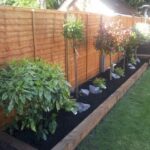Are you looking for inspiration on how to design gardens ideas? Garden design is an essential aspect of creating a beautiful and functional outdoor space. A well-designed garden can greatly enhance the overall aesthetic of a property, providing a peaceful retreat and adding value to your home. In this article, we will explore the fundamentals of garden design, from understanding different garden styles to choosing the right plants and incorporating personal touches.
Garden design goes beyond simply planting flowers and shrubs. It involves careful planning, consideration of the space available, and attention to detail. A thoughtfully designed garden can transform a dull or unused outdoor area into a vibrant and inviting space.
Understanding different garden styles is crucial in creating a cohesive design that suits your preferences and lifestyle. Whether you prefer formal, informal, or contemporary garden styles, each has its own characteristics and elements that define them. By assessing your space and evaluating factors such as sunlight exposure, soil conditions, and climate, you can choose the right style and plants that will thrive in your garden.
In addition to aesthetic considerations, functionality is also an important aspect of garden design. Creating functional spaces such as seating areas, entertainment areas, or outdoor living spaces can make your garden more enjoyable and practical for everyday use. By adding personal touches that reflect your individual style, you can create a unique and meaningful outdoor oasis. With proper maintenance, you can preserve the beauty and health of your garden design for years to come.
Understanding Garden Styles
When it comes to garden design, understanding different garden styles is essential for creating a cohesive and visually appealing outdoor space. There are several garden styles to consider, each with its own unique characteristics and elements. Here are some popular garden styles to consider when designing your own garden:
- Formal Gardens: Formal gardens are characterized by their symmetrical layout, geometric shapes, and well-defined pathways. These gardens often feature clipped hedges, topiaries, and formal flower beds. When designing a formal garden, it’s important to focus on precision and symmetry.
- Informal Gardens: Informal gardens have a more relaxed and naturalistic feel. These gardens often include curved pathways, flowing plantings, and a mix of different plant varieties. To create an informal garden, focus on creating a sense of abundance and diversity in your plant selections.
- Contemporary Gardens: Contemporary gardens embrace modern design principles and often feature clean lines, minimalist planting schemes, and innovative materials. These gardens may include elements such as decking, sleek water features, and architectural plants. When designing a contemporary garden, focus on creating a sense of harmony through simplicity and sophistication.
Incorporating these different garden styles into your own design can help you create a space that suits your preferences and reflects the overall aesthetic of your property.
Next time we will discuss tips for evaluating the size and layout of your garden space.
Assessing Your Space
When it comes to garden design, one of the most crucial steps is assessing your space. Before you start planning and planting, take some time to evaluate the size and layout of your garden area. Consider how much sunlight different areas receive throughout the day, as well as the soil conditions and climate in your region. Understanding these factors will greatly influence the success of your garden design.
To begin assessing your space, start by mapping out the different areas of your garden. Take note of any existing trees, shrubs, or structures that are already in place. This will help you determine which areas receive full sun, partial sun, or shade throughout the day. Additionally, be mindful of any slopes or uneven terrain that may impact water drainage and plant growth.
Once you have a clear understanding of your garden’s layout and environmental conditions, you can then move on to selecting plants that are suitable for your space. Different garden styles may call for specific types of plants, so it’s important to choose wisely based on your aesthetic preferences and the needs of your garden environment. By carefully assessing your space first, you can ensure that your plant selections will thrive in their designated areas.
Along with considering sunlight exposure and soil conditions come climate consideration; How does wet season affect this type of soil.This information ensures not only an aesthetically pleasing result but also one that is sustainable and easy to maintain over time with fewer adjustments if possible due to costs in renovations.
In summary Assessing Your Space enables admirers who look to create their dream gardens by ensuring their project mirrors what they truly love is like – a vision becoming a reality through dedication – from its earliest stage. By foundation setting modifications (if required) making up a measure aimed at precision placement times when designing for functionality later on becomes fulfilling actually lived.
Choosing the Right Plants
When it comes to designing a garden, one of the most important aspects to consider is choosing the right plants. Whether you are aiming for a formal, informal, or contemporary garden style, selecting plants that are suitable for your garden’s environment and maintenance requirements is crucial. The first step in this process is to assess the sunlight, soil conditions, and climate of your garden space. Understanding these factors will help you determine which plants will thrive in your garden.
Once you have assessed your space, it’s time to select the actual plants for your garden design. Consider the size and layout of your garden when choosing plants, making sure they complement the overall aesthetic you are trying to achieve. For a formal garden style, structured and symmetrical plants such as boxwood or clipped hedges may be suitable. In contrast, an informal garden style may call for more natural and free-flowing plants like wildflowers or ornamental grasses.
In addition to considering the aesthetic appeal of the plants, it’s also important to factor in their maintenance requirements. Some plants may require more care and attention than others, so be sure to choose ones that align with the amount of time you can dedicate to garden maintenance.
By carefully selecting the right plants for your garden design based on style, environment, and maintenance needs, you can create a beautiful and thriving outdoor space that enhances the overall appeal of your property.
Focal Points and Features
The use of focal points and features in garden design is essential to creating a visually appealing and interesting outdoor space. Whether it’s a small sculpture, a water feature, or a winding pathway, these elements can add depth and character to your garden. When considering how to design gardens ideas that incorporate focal points and features, it’s important to carefully plan their placement and consider how they will interact with the surrounding plants and hardscaping.
One popular way to incorporate focal points in garden design is by using sculptures or other art installations. These can serve as eye-catching additions that draw attention and provide a sense of visual interest. When choosing a sculpture for your garden, consider the size, style, and material to ensure it complements the overall aesthetic of the space. Additionally, consider the placement of the sculpture within the garden to create balance and harmony.
Water features are another effective way to create focal points in garden design. Ponds, fountains, and streams add movement, sound, and life to the garden. Water features can also attract wildlife such as birds and butterflies, further enhancing the natural beauty of your outdoor space. When designing a water feature for your garden, consider factors such as maintenance requirements, space availability, and the overall theme of your garden.
Pathways are an important element in garden design that can guide visitors through the space while adding visual interest. Whether made from stone pavers, gravel, or stepping stones, pathways can define different areas within the garden and create a sense of flow. When designing pathways for your garden, consider their placement in relation to existing plants and features, as well as how they will be used by visitors.
| Element | Considerations |
|---|---|
| Sculptures | Size, style, material; placement for balance |
| Water Features | Maintenance requirements; space availability; theme compatibility |
| Pathways | Materials (pavers/gravel/stepping stones); placement for flow |
Designing for Functionality
Tips for Creating a Functional Garden Space
When it comes to designing a garden, it’s important to consider not only the aesthetic appeal but also the functionality of the space. One key tip for creating a functional garden space is to carefully plan the layout.
This involves considering how you and your family will use the garden and ensuring that there are clear pathways and designated areas for different activities. For example, if you enjoy dining outdoors, it’s essential to include a well-defined dining area, and if you have children or pets, incorporating a play area or safe zones for them to roam freely is crucial.
Incorporating Seating Areas and Outdoor Living Spaces
Incorporating seating areas and outdoor living spaces is another important aspect of designing for functionality in a garden. Whether it’s a cozy seating nook surrounded by fragrant flowers or a spacious patio complete with outdoor furniture, these spaces enhance the usability of the garden. When planning these features, consider factors such as comfort, privacy, and protection from the elements.
Creating Entertainment Areas
Entertainment areas are also an integral part of designing a functional garden space. This can range from an outdoor kitchen and barbeque area for hosting gatherings to a fire pit surrounded by comfortable seating for late-night conversations. Whatever form it takes, incorporating entertainment areas into your garden design encourages you to spend more time outdoors, enjoying all that your garden has to offer.
By understanding how to design gardens ideas with functionality in mind, you can create a space that not only looks beautiful but also serves its purpose in enhancing your overall lifestyle. These thoughtful considerations will ensure that your garden is not only aesthetically pleasing but also practical and inviting for everyday use.
Adding Personal Touches
Designing a garden is not just about creating a visually appealing space, but also about infusing it with personal touches that reflect your style and personality. Adding personal touches to your garden design can make it feel like an extension of your home, a place where you can relax and unwind. Here are some ideas on how to incorporate your personal style into your garden design.
Selecting Personal Elements
When adding personal touches to your garden, consider elements that hold significance to you. This could be anything from incorporating favorite colors or patterns, to including plants that hold sentimental value. For instance, you could plant flowers that have special meaning to you or add decorative items that remind you of fond memories.
Customizing Functional Areas
Integrating functional areas such as seating spaces or outdoor dining areas gives you an opportunity to add personal touches. Consider choosing furniture, fabrics, and accessories that reflect your preferred style. You could personalize cushions with unique patterns or invest in furniture pieces that align with your aesthetic preferences.
DIY Projects and Artwork
One way to personalize your garden design is by incorporating DIY projects or integrating artwork. Whether it’s creating handmade planters, installing handcrafted sculptures, or hanging original artwork, these personal elements can truly make your garden feel like a reflection of who you are.
By considering these ideas for adding personal touches to your garden design, you can create a space that not only looks beautiful but also feels deeply meaningful and unique to you. Ultimately, personalizing your garden will transform it into a place where you can find joy and tranquility while being surrounded by elements that resonate with your individuality.
Maintaining Your Garden Design
A well-designed garden is not just about creating a beautiful space, but also about ensuring that it remains vibrant and healthy throughout the year. Once you have implemented your garden design ideas and brought them to life, it is essential to maintain your garden to preserve its beauty and overall functionality. Regular maintenance not only keeps your garden looking its best, but it also ensures the longevity of the plants and features within it.
One important aspect of maintaining your garden design is to establish a regular watering schedule. Different plants have varying water needs based on their type and environmental conditions. Therefore, it is crucial to understand the watering requirements of each plant in your garden and to provide them with the appropriate amount of water. Additionally, checking for any signs of pests or diseases on your plants during watering can help prevent potential issues from escalating.
In addition to watering, proper fertilization is essential for the health and vitality of your plants. Understanding the specific nutrient needs of your plants will allow you to provide them with the necessary fertilizers at the right times. Furthermore, regular weeding, pruning, and deadheading are important maintenance tasks that help keep your garden looking tidy and well-kept. These practices also promote healthy growth and flowering in your plants.
Apart from plant care, maintaining hardscape features such as pathways, fences, or seating areas is equally important for the overall upkeep of your garden design. Regular cleaning, repairs, and resealing of surfaces help ensure that these elements remain functional and visually appealing. By paying attention to both plant care and hardscape maintenance, you can enjoy a stunning garden that continues to thrive year after year.
Conclusion
In conclusion, designing a garden is an art that can greatly enhance the aesthetics and functionality of any outdoor space. Understanding the different garden styles, assessing your space, choosing the right plants, creating focal points and features, designing for functionality, and adding personal touches are all essential elements in creating a well-designed garden.
By incorporating these elements and maintaining the garden properly, you can create a beautiful and inviting outdoor space that reflects your personal style and enhances the overall look of your property.
When it comes to how to design gardens ideas, it’s important to remember that there is no one-size-fits-all approach. Each garden is unique, and careful consideration should be given to factors such as sunlight, soil conditions, climate, and personal preferences. Whether you prefer a formal, informal, or contemporary garden style, it’s crucial to select plants that are suitable for your environment and to incorporate elements that reflect your individuality.
As you embark on your garden design journey, don’t be afraid to experiment with different ideas and combinations. Your garden should be a reflection of your personality and taste. So take the time to personalize it with unique elements that resonate with you. By following these guidelines and infusing your creativity into the process, you can create a stunning garden that brings joy and beauty to your outdoor space for years to come.
Frequently Asked Questions
How Do You Design a Garden Layout?
Designing a garden layout involves considering the size and shape of the space, the type of plants you want to include, and any specific features or focal points you envision. It’s important to plan for factors like sunlight, drainage, and maintenance needs as well.
What Are the 10 Principles of Garden Design?
The 10 principles of garden design include concepts such as unity, balance, simplicity, rhythm, repetition, and proportion. These principles help guide the overall look and feel of a garden, ensuring that it is both visually appealing and functional.
Is There an App to Help Me Design My Garden?
Yes, there are several apps available to help with garden design. These apps often allow users to input their garden dimensions and then experiment with different layouts and plant selections. Some even provide virtual reality tools to visualize how the garden will look once established.

Welcome to my gardening blog! I am passionate about plants and enjoy sharing my knowledge and experiences with others. In this blog, I will write about everything related to gardening, from tips on how to get started to updates on my own garden projects.





